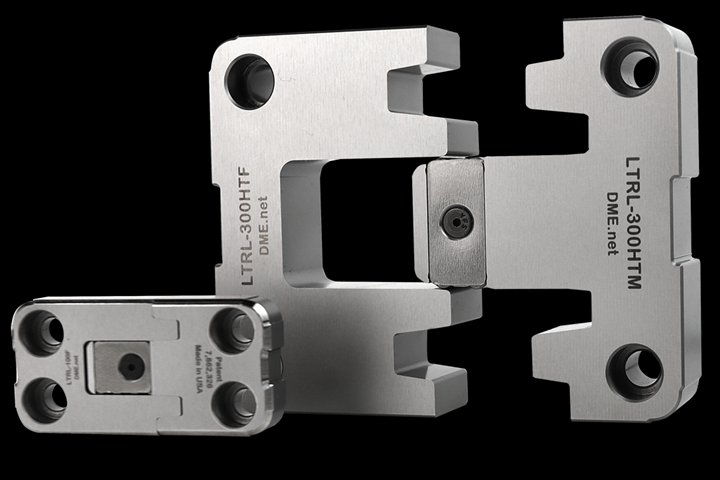Redesigned Roller Lock Available in Three Advanced Materials
DME new LT-Series LifeTime Side Locks come in D2, DC53, or 440C stainless steel, depending on the tool’s requirements.
DME says its LT-Series LifeTime Side Locks feature an improved design in three advanced materials to support mold alignment in high-precision molding applications. Improper mold alignment can cause dimensional problems in the final product, including flash, as well damage to components or the mold itself.
DME’s new side locks feature a tri and penta-lock interlacing locking design for more precise alignment and holding power in the final lock up. The longer male portion and the new carbide rollers ensure the mold halves align easily, protecting against cross-over shutoff.
The standard LifeTime Lock is made of D2 steel for long mold-life performance. The High Heat LifeTime Lock is machined from DC53 steel, suitable for high-temperature processing up to 750 F required for some engineering resins. The final material in the portfolio is a 440C stainless steel intended for clean room and packaging applications.
Machined to precise tolerances, each lock in the new LifeTime Lock is fully interchangeable within the same lock series. DME notes that this feature makes them perfect for shuttle and rotary mold applications.

DME’s new LT-Series LifeTime Side Locks come in D2, DC53, or 440C stainless steel.
Related Content
-
How To Design Three-Plate Molds – Part 4
There are many things to consider, and paying attention to the details can help avoid machine downtime and higher maintenance costs — and keep the customer happy.
-
How to Start a Hot-Runner Mold That Has No Tip Insulators
Here's a method to assist with efficient dark-to-light color changes on hot-runner systems that are hot-tipped.
-
Three Key Decisions for an Optimal Ejection System
When determining the best ejection option for a tool, molders must consider the ejector’s surface area, location and style.
